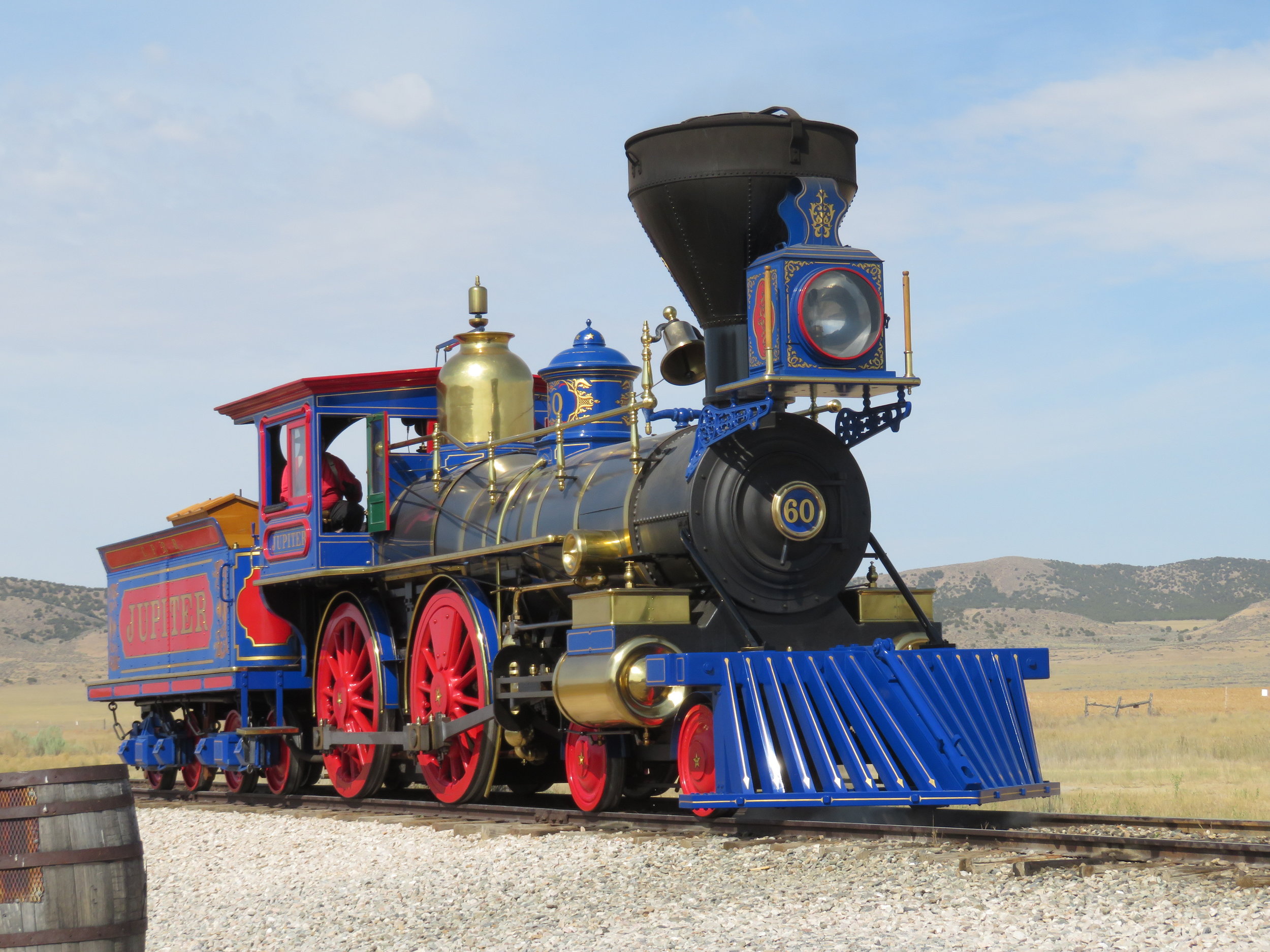TTH - Golden Spike National Historic Site
/“What was it the Engines said,
Pilots touching, —head to head
Facing on the single track,
Half a world behind each back?”
We traveled ~30 miies west of Brigham City, UT on a country road to Promontory Summit, the unlikely historic meeting place of east and west on May 10, 1869.
Walking the railbed of the Big Fill Trail
We intentionally arrived early at Golden Spike National Historic Site and took a quick walk along the Big Fill Trail, one of the Union Pacific’s construction challenges to maintain the railroad’s maximum 2% grade employing, cuts, trestles and fills. We followed the railbed, dry and dusty, along its barely noticeable incline. I like 2% grades, by the way.
Here comes the Jupiter!
At the Visitor’s Center, we bided our time watching the park video, then checked out the limited exhibits in the tiny ‘museum’ before heading outside for the main event. The crowd waited impatiently as a ranger filled us in on the background of the Transcontinental Railroad. An exact replica of the Central Pacific’s wood-fired steam engine, Jupiter pulled into the station, its bells clanging, its whistle blaring, steam hissing. The crowd cheered wildly; the little ones screamed and bawled.
Then the Union Pacific's #119 chugged into the station.
A half hour later, the Union Pacific’s coal-fired steam engine, #119, arrived with similar fanfare and met the Jupiter ... engine facing engine, only 10 feet of single track separating them. Clouds of steam vaporized in the air as the two engines came to a stop and , like us, waited for the ceremonial final spike to be driven into the last rail. The words engraved on the golden spike? 'May God continue the unity of our Country as this Railroad unites the two great Oceans of the world.'
The last rail waiting for the ceremonial Golden Spike to be driven in to complete the Transcontinental Railroad.
Driving in the golden spike
A re-enactment followed with lofty speeches by lofty men and congratulatory messages from across the country … all connected via ‘live coverage’ … telegraph. Despite the 90F temps, the re-enactment actor/participants in period garb played their parts well and we could almost believe we were back in 1869 watching in awe this momentous occasion … except for the microphone the ranger used and the 2-way radio and the A/C in the visitor’s center and ... I believe this is called a 'suspension of disbelief'.
In all, the Central Pacific, employing over 15,000 Chinese laborers and thousands of Irish, laid 690 miles of track from Sacramento through the Sierra Nevadas, including 15 tunnels through sheer mountains of granite. The Union Pacific drew upon a vast pool of unemployed men in the east including Civil War veterans from both sides, ex-slaves, Irish, German and Italian immigrants and Native Americans. They laid 1,086 miles over the Great Plains. A total of 1,776 miles over desert, rivers and through mountains to bind together the East and the West. A journey that had taken six harrowing months by ox-drawn wagon now took six or seven days by train. 'Twenty-one years after the railroad was completed, the frontier was history'.
As an aside, the railroads weren't exactly sure where they were supposed to meet and actually continued building beyond the final meeting point ... sometimes constructing parallel tracks within feet of each other. It seems Congress never established the final meeting place because they couldn't agree on the location. Sound familiar?
We're heading to Idaho and points north and east. Come join us ... baked potatoes for dinner maybe?








